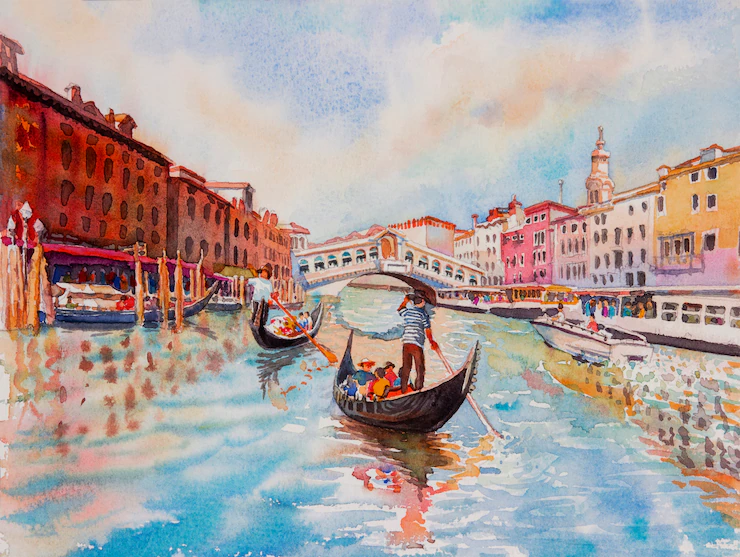Is It A Good Idea To Invest In Fine Art?

Fine art makes an exciting addition to investors’ portfolios. It diversifies your investments, but it also serves as a secure hedge against inflation.
However, most investors assume they can’t access the fine art marketplace since they consider it reserved for the ultra-wealthy. As a result, most investors don’t include art as an alternative asset in their portfolios.
While it’s true that most investors don’t own millions of dollars for a Renoir painting, nowadays, there are many opportunities for smaller art investments.
Fine art investments haven’t been limited to the wealthy elite for a while now. If you enjoy the beauty of fine art, you can diversify your portfolio assets and find gorgeous pieces to enhance your living space.
However, before you decide to invest in fine art, you have several important things to learn. This article will explain if art is a good investment and how to take the first steps toward investing in fine art.
Is Fine Art a Good Investment?
Although it’s usually a significant investment, fine art still deserves a good spot in any investor’s portfolio.
Art is a physical investment asset, and it isn’t prone to fluctuating in value as the stock and bond markets tend to fluctuate. It’s not too correlated to stocks or bonds. As a result, no matter what happens to the financial markets, it won’t significantly impact the fine art market.
Is Art a Good Investment in 2021?
In 2020, the fine art market went through a challenging period due to canceling in-person auctions because of COVID-19. As turnover in all contemporary art decreased by 34%, many galleries and auction houses shifted to doing business online.
It helped the entire market bounce back, impacting turnover and making it reach an all-time high. After the transition, online galleries and auctions sold more art pieces than ever before. It’s a trend that lays down a solid foundation for the future of fine art as an investment.
However, an investor should still do thorough research before deciding which piece is worth investing in and which isn’t. While getting a high return is possible, it is essential to be selective and ready to hold on to an art piece to reach a higher value.
How to Invest in Fine Art
There are several ways to invest in fine art. The traditional way includes working with an art dealer, going to art fairs, and visiting auction houses.
However, the digital art arena is a quickly expanding market area. It brings more liquidity and speeds things up by far. Fine Art America reached its all-time peak in 2021.
Digital art selling platforms similar to Masterworks or Yieldstreet allow investors to buy fractional shares of a specific artwork. You don’t have to invest millions in owning fine art this way.
How to Evaluate Art Investment Opportunities
The best fine art to invest in is the type you sincerely enjoy looking at and owning. You will probably hold on to the piece for years, and if you buy something you consider ugly just to profit from it, you’re missing the point of investing in fine art. Enjoying the pieces while holding on to them until they reach higher value is the essence of fine art investments.
Art is an incredibly diverse market, and it’s critical to understand current trends and get familiarized with the artists and their brands.
There are many galleries, both physical and online, that offer art for investors to purchase. Local art fairs are also an excellent resource for incredible finds.
You can also use social media channels to discover artists and pieces you like. Many artists sell their work directly through their websites.
It would help a lot if you’d do your research about a specific artist to learn how they have grown over the years and determine if the growth is sustainable.
The most important thing is to look for art that has already been traded at least several times. It tells you there has been a demand for the piece and indicates there will be demand in the future.
When deciding on an artist you’d like to invest in, it’s wise to pay attention to artists favored by top collectors. It’s a strong indicator that their pieces will continue to grow in value.
Bottom Line
Investing in fine art is quite different than investing in stocks. It carries risk, and although huge returns are possible, investors are usually bound to wait for years, even decades, to profit. However, if buying art pieces makes you happy, investing in them may be the right choice.
If your artwork increases in value over time, you can sell those gorgeous pieces for remarkable profit and use the means to redecorate your artsy display. Should they not reach a significant value increase, you will still have fabulous artwork in your possession.
Read Also:
All Comments
binance推薦獎金
29 July, 2024
Thanks for sharing. I read many of your blog posts, cool, your blog is very good.












